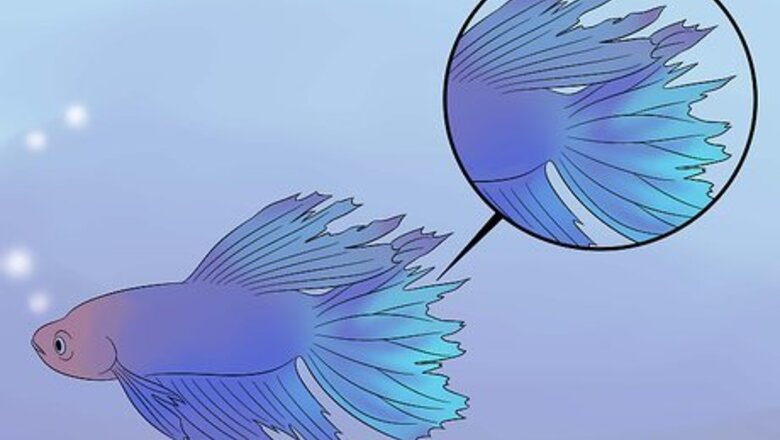
views
Identifying Betta Fish Diseases
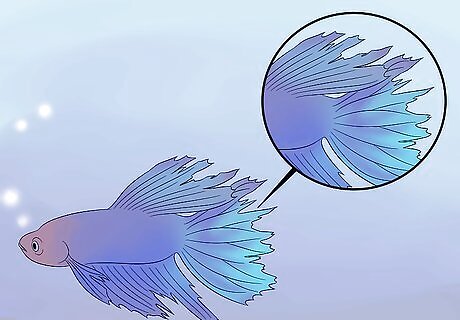
Notice if your fish’s fins look clumpy or your fish is not as active as he usually is. Your Betta may also have a paler hue than normal and white or cotton-like patches on his body. These are all signs of a fungal infection. Fungus can grow in tanks that are not treated with salt and Aquarisol once the tank water is added. The fungus can spread quickly from one infected fish to the other fish in the tank so it should be treated right away.

Inspect your Betta fish’s eyes to see if one eye or both eyes are protruding from his head. This is a symptom of a bacterial infection called popeye. Your fish may have developed popeye due to dirty tank water, or due to a more serious illness like tuberculosis. Sadly, tuberculosis is not curable in fish and is fatal for Betta fish. Tuberculosis can cause curved spines (not to be confused with the natural "hump" that older bettas develop).
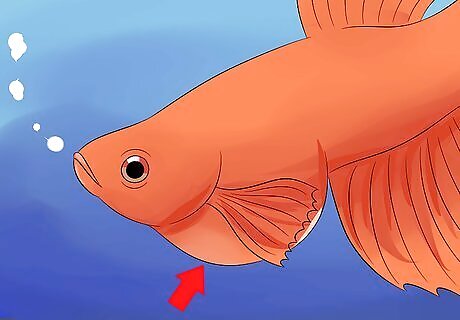
Check if your fish has any protruding scales or looks bloated. These are symptoms of dropsy, which is a bacterial infection in your fish’s kidneys. It can cause renal failure and fluid accumulation, or bloating. It often occurs in fish that are weakened due to poor water conditions or from eating contaminated food. Once your fish suffers from kidney failure as a result of fluid buildup, your fish will likely die. You can prevent your fish from contracting dropsy by not feeding him live worms or contaminated food. Aquarium salt baths can draw out fluid, and medicines can help. Since it's hard to know what medicines are appropriate, and usually dropsy worsens quickly, painlessly euthanizing is acceptable.
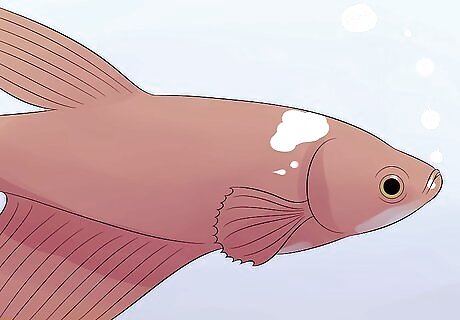
Note if your fish is covered in white specks or spots that look like salt or sand. This is a sign of fish ick or ich. The spots may be slightly raised and your fish will likely scratch against objects in the tank due to irritated and itchy skin. Your fish may also have respiratory issues and appear to gasp at the surface of the tank water. Ick attacks fish that are stressed due to irregular water temperature and pH fluctuations in the water.
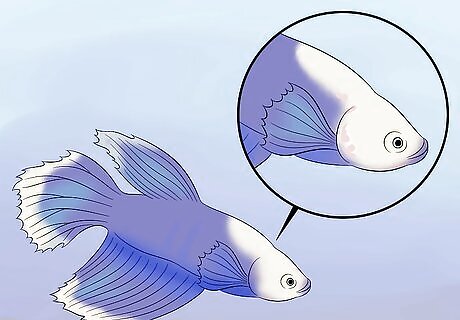
Look to see if your fish’s tail or fins are fraying or appear faded. These are all signs of a bacterial infection that causes your fish’s fins, tail and mouth to rot. Fin rot typically occurs in fish who are bullied by other fish in the tank or who are injured by a fin-nipping tank mate. A poor tank environment can also contribute to the development of fin rot. However, if your fish is a crowntail, it is natural for him/her to have a shredded looking fin. Luckily, most Betta fish can regrow their tail and fins if fin rot is treated in time. However, your Betta fish’s tail and fins may not be as vibrant as they once were when they grow back. Some Betta fish can contract advanced body and fin rot when a case of regular fin rot goes untreated for a long period of time. Your fish may lose his fins and body tissue as the rot progresses. Once the rot eats your fish’s body tissues, it can be difficult to cure the advanced fin rot and your fish will essentially be eaten alive.
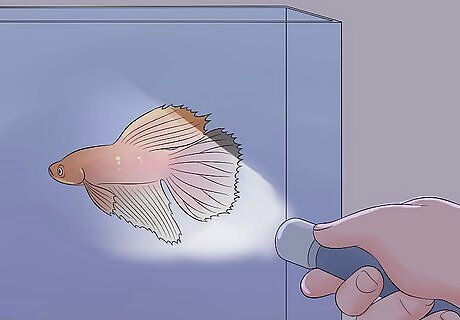
Shine a flashlight on your Betta to see if his body looks gold or rusty in color. This is a symptom of velvet, which is a parasite that is highly contagious. If your Betta has velvet, he may also clamp his fins close to his body, start to lose his color, have a lack of appetite, and may scratch against the sides of the tank or the gravel in the tank. As velvet is a highly contagious parasite, you should treat all the fish in your tank if one fish shows signs of velvet.
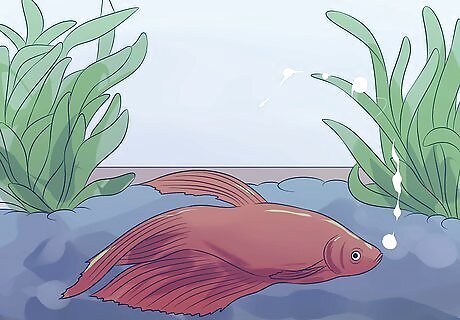
Check if your fish is floating on one side or is not moving at the bottom of the tank. These are signs of swim bladder disorder, a common illness among Betta fish. Swim bladder disorder is caused by overfeeding your Betta fish, leading to a swollen swim bladder that causes your fish to float on one side or the lie at the bottom of the tank because swimming becomes too difficult. It could also be a sign of ammonia poisoning, which is caused by ammonia in the water your betta is in. Keep in mind swim bladder is easy to treat and does not hurt your fish, so you do not need to worry about your fish dying due to swim bladder, but ammonia poisoning is dangerous.
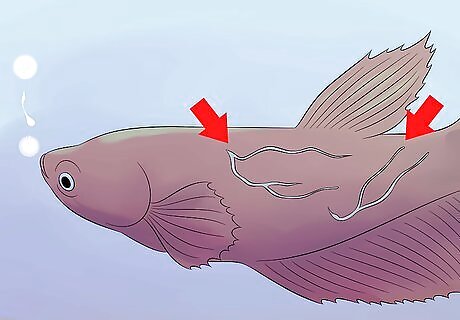
Note if there are any whitish-green threads on your fish’s skin. This is a symptom of anchor worms, which are small crustaceans that burrow into your fish’s skin and enter his muscles. They then release eggs in your fish before they die, leaving behind damage in your fish that can become infected. Your Betta can contract an external parasite like anchor worms due to exposure at the pet store, from his food, or from infected fish who are introduced to his tank. Your fish may also scratch against objects to try to remove the anchor worms, and the points where the anchor worms are attached to your fish may be swollen.
Treating Betta Fish Diseases
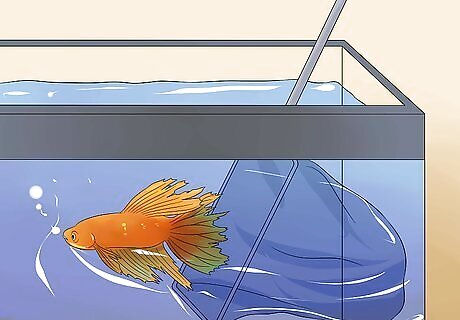
Quarantine the infected Betta fish. If your Betta lives with other fish in a tank, use a clean Betta fish net to remove him from the tank and place him a smaller tank with the necessary filtration system. This will then allow you to treat the water and the tank for any diseases, without harming your fish. You should also check that the quarantine tank has the right water temperature for your Betta, between 78 degrees and 80 °F (26.7 °C).
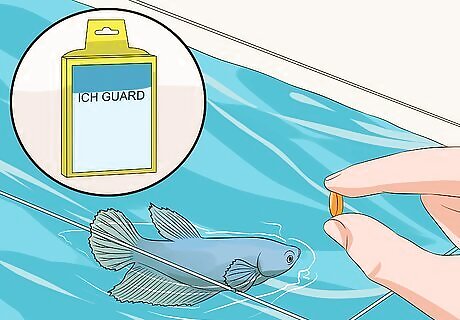
Use salt baths or medications to treat ich. You can find out how to do salt baths online. Medications are only used after salt baths don't work. You can also treat ich by raising the temperature of your tank if your tank is larger than five gallons. If your tank is smaller than five gallons, you should avoid raising the temperature as this can kill your Betta fish. Raise the tank temperature in large tank in increments to avoid shocking your Betta until it reaches 85 degrees. This might help to kill the ich parasite. You can also move your Betta fish to a temporary container and raise the temperature of the water to 85 degrees to kill any remaining ich parasites before you introduce your Betta fish back to the tank. You can prevent the develop of ich by maintaining a consistent water temperature and cleaning the tank weekly.
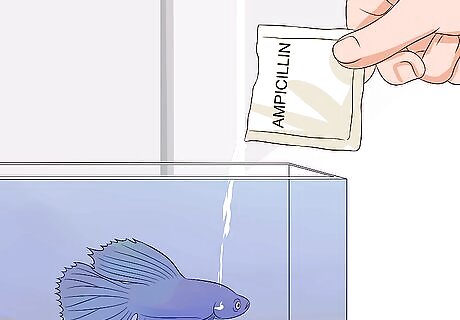
Eliminate fungus with Ampicillin or Tetracycline. These medications can kill off the fungus and prevent your Betta from developing more fungus that can cause fin and tail rot. You should also clean the tank completely and do a complete water change. Treat the new water with ampicillin or tetracycline, as well as a fungus eliminator. You will need to change 50% of the water for a week, adding the medication in each water change, to kill the fungus for good. Once your Betta fish no longer appears to be losing tissue on his tail or fins, you can resume your normal tank cleaning schedule. You can use ampicillin to also treat popeye in your betta. Do a tank cleaning and full water change every three days, adding ampicillin with each water change. Your fish’s Popeye symptoms should disappear within one week.
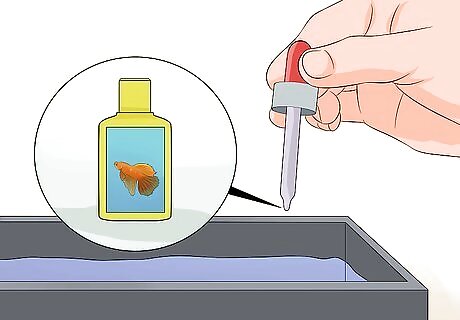
Apply BettaZing to the tank to kill any external parasites. Adding a tiny bit of salt (1/2 teaspoon per gallon of water) will also do it (unless you have live plants). If your fish shows any signs of an external parasite such as anchor worms or velvet, you should change out at least 50% of the tank water. You will then need to treat the remaining water with BettaZing to kill any remaining parasites and their eggs. You can purchase BettaZing at your local pet store.
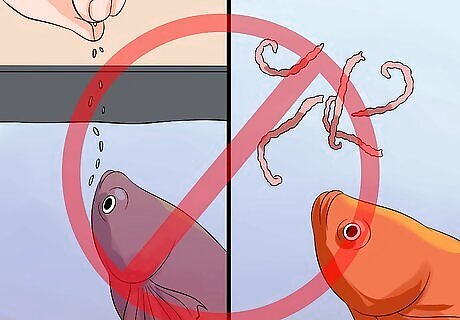
Avoid overfeeding your Betta to prevent swim bladder disorder. Soak your betta's pellets for 15 minutes to prevent bloating. Your Betta should be able to consume all the food in his tank within two minutes of being fed. Excess food in your fish’s tank can lead to poor water quality and make your Betta more susceptible to disease. You should feed your Betta a varied, high protein diet. Look for Betta approved foods at your local pet store, as well as frozen or processed tropical fish foods.
Preventing Betta Fish Disease
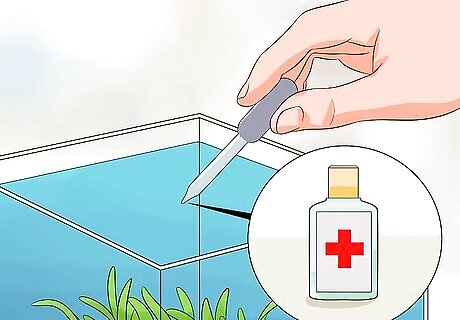
Create a betta first aid kit. It’s possible your betta will contract a disease or infection at some point in his life span, so be prepared by having medications on hand to treat your Betta quickly and efficiently. Medications can be stressful for your betta and should only be used when you have confirmed your betta has a specific disease or infection and medication is necessary to treat the issue. You can find medicine for fish at your local pet store. Your first aid kit should contain the following medications: BettaZing or Bettamax: These medications are anti-parasitic, anti-fungal, and anti-protozoan. They are useful for a number of issues, such as fungus and velvet parasites. You can also use this medication as a preventative measure if you are trying to get a Betta used to a new environment or every time you introduce a new Betta to your tank. Kanamycin: This antibiotic can be found at many fish stores and pet stores. It can used for serious bacterial infections. Tetracycline: This antibiotic is used to treat less serious bacterial infections like fungus. Ampicillin: This is a useful antibiotic for treating popeye and other infections. You can find this antibiotic in specialty fish stores and online. Jungle Fungus Eliminator: This is an anti-fungal treatment that works on several fungus infections and is useful to keep on hand as a Betta fish owner. Maracin 1 and Maracin 2: These medications come in hard tablet form and can be used to treat mild infections like fin and tail rot. However, the are not as effective as other medications to treat more serious infections.
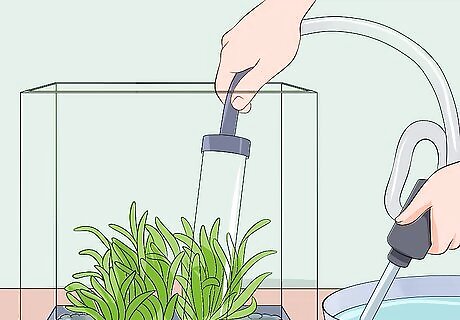
Do a 15-50% water change once a week, to keep your betta from being stressed. This will help to remove any waste buildup and any decaying organic matter from excess food and dead leaves or roots from plants. Doing a small partial water change weekly will also clean any toxins from the water and keep the water clean. Do not remove any of the aquarium plants or decorations from the tank or bowl. Removing or cleaning these items can kill the good bacteria that has been filtering through your tank and reduce the quality of your filtration system. As well, you do not need to remove your fish from the tank or bowl when you do a partial water change. This can stress out your fish and could expose him to harmful bacteria. You can use a siphon to suck up any gunk in the gravel and decorations. You should also use an algae scraper to remove algae on the surface of the tank or the tank ornaments before you remove any of the water. If your tank does not have a filter, start with clean water and test daily for ammonia. When the kit says there is ammonia, it's time for a water change. Getting a top cover for the bowl or a filter can reduce the water changes you will need to do and protect your fish from getting an infection or a disease. Check the water once a day to ensure it is not cloudy, foamy, or has an unusual odor. These could all be signs of a bacterial bloom and may require you to do multiple 50% water changes. Doing this will prevent your Betta from developing any diseases or infections.
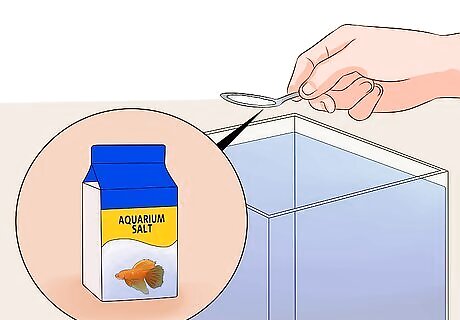
Add tiny amounts of aquarium salt to remove any bacterial infections. Bacterial infections like fin and tail rot can be prevented by keeping up with weekly water changes. Unlike table salt, aquarium salt does not contain any additives like iodine or calcium silicate. (Don't use table salt!) Do not use aquarium salt or copper-based medicines if your tank also includes aquatic snails or corydoras, as they can not handle these medicines and may die. Nerite snails are salt-tolerant, however they will not be able to handle copper, so proceed carefully. Always follow the instructions on the package for dosage amounts. Keep in mind that aquarium salt is not for long term use. It's only for baths.

















Comments
0 comment